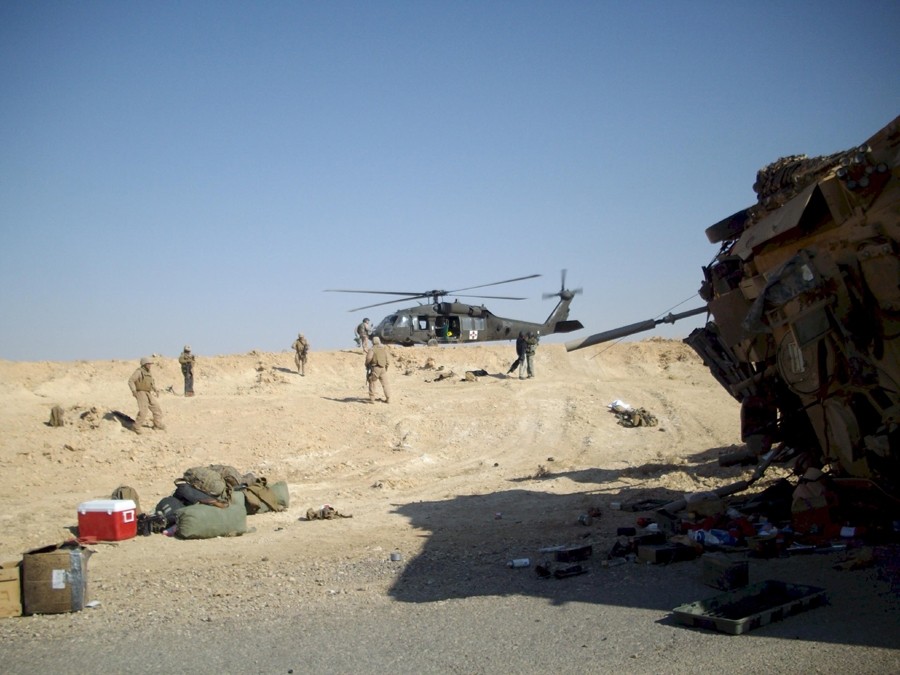The standing operating procedure (SOP) for the unit typically focused on: (1) Planning and establishing the COP; (2) Ensuring route security so each outpost could be kept resupplied; (3) Clearing operations after the COP had been stood up to clear IEDs and find weapons caches; and (4) Census patrols to follow after the clearing operations to consolidate the position and gradually work its way into the human terrain of the area – the real target of MacFarland’s campaign.
*****
This is an excellent paper that discusses some of the key innovations of the war. The main theme that I am getting from all of this, is intelligence, intelligence, and intelligence.(jundism hint)
If you notice in the publication, there are some themes that keep getting repeated. The importance of networks or fusion is one of them. To bring together different groups of experts, and have them contribute to actionable intelligence. And feeding these fusion groups requires interaction with the terrain, population and the enemy.
Hence why COPS or combat outposts are so important. It allows a unit to insert itself into the heart of a population/insurgency center and get as much information as they can via census patrols, sensors, raids, attacks against and by the enemy, etc. All of this is fed into a searchable database that can be cross referenced and searched by other units and organizations, and future deploying units and organizations. In other words, all actions and collected information is fed into the machine.
I also liked the reference to ‘continuous improvement’. Too bad the author didn’t use the term Kaizen in the paper though. I also saw hints of ‘learning organization’, which is also an incredibly important concept for developing winning TTPs and strategies. Because once you have all of this great information and experience, you have to build a snowmobile out of it so you can win the fight. A rigid organization that doesn’t seek feedback internally and externally, work together and with others, or doesn’t innovate, will not succeed.
Now here are my ideas to further the concepts into our industry. Right now we are witnessing the African Union stumbling along in Somalia and trying to gain a foothold. My thoughts on the whole thing is that you could take a PMC that was composed of former military leaders familiar with these concepts, and help the AU to organize accordingly. Or AFRICOM could send a leadership team in there to help organize the effort. Either way, I see no reason why the AU forces could not replicate this strategy in Mogadishu right now.
I also think that PMC’s could learn a lot from these types of strategies. PMC’s have had to set up remote sites that are very similar to ‘COPS in a box’. The CMC projects are a prime example. But what was missing with those operations was deliberate census patrols or the other means of intelligence collection that the Marines and Army could use.
The way human intelligence was collected for these projects was often through the process of hiring and working around locals for guard positions and general labor projects. You learn all sorts of things about the locals when you work around them all day, day in and day out.
Imagine though that if PMC’s actually did census patrols as part of the contract? Or planted sensors in abandoned buildings in their area? That data could not only be useful to that PMC, or future replacement PMC’s, but could also be added to a much larger database that the military could use? A PMC remote site and the routes they travel daily could be an excellent source of intelligence for the military units of that area, but unless that PMC is brought into that fusion process, it will simply be another lost chance at crucial data collection.
It would also be nice if PMC’s could take advantage of that fusion process as well, and access the COPLINK or whatever database that is established locally. It could save lives and win wars, but it also requires both the military and civilian equivalents to talk and work with each other. Stuff to think about as we continue the fight and learn new ways of doing our thing in this war. –Matt
——————————————————————
Innovation in War: Counterinsurgency Operations in Anbar and Ninewa Provinces, Iraq, 2005-2007
James A. Russella
August 2010
To cite this Article: Russell, James A. ‘Innovation in War: Counterinsurgency Operations in Anbar and Ninewa Provinces, Iraq, 2005–2007’, Journal of Strategic Studies, 33:4, 595 – 624
Abstract
This article analyzes operations by three battalions conducting counterinsurgency, or COIN, operations in Iraq over the period from July 2005 through March 2007: the 1st Battalion, 7th Marine Regiment (1-7) along the Iraq-Syrian border in the first half of 2006; the 1st Battalion, 37th Armored Regiment (1-37) battalion operating in south-central Ramadi in the fall of 2006; and the 2nd Battalion, 1st Infantry Regiment, or 2-1, operating in eastern Mosul in 2005-06. The empirical evidence presented in these cases suggest that, contrary to popular perceptions, the units successfully innovated in war – a process largely executed organically within the units themselves. Innovation is defined here as the development of new organizational capacities not initially present when the units deployed into the theater. The evidence presented in these cases suggests that the innovation process enabled these units to successfully transition from organizations structured and trained for conventional military operations to organizations that developed an array of new organizational capacities for full-spectrum combat operations. The units in this study developed these new capacitites largely on their own initiative.
